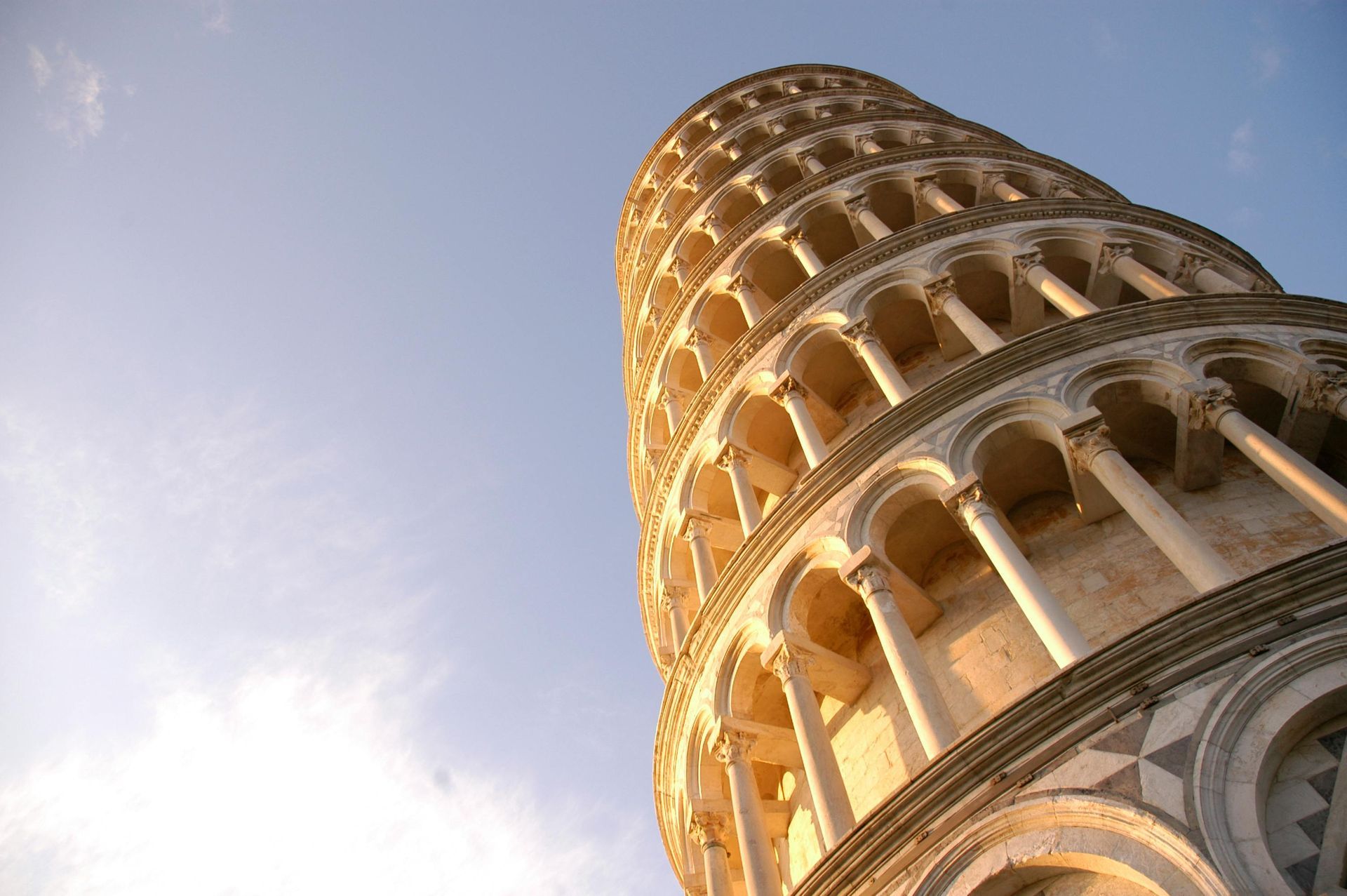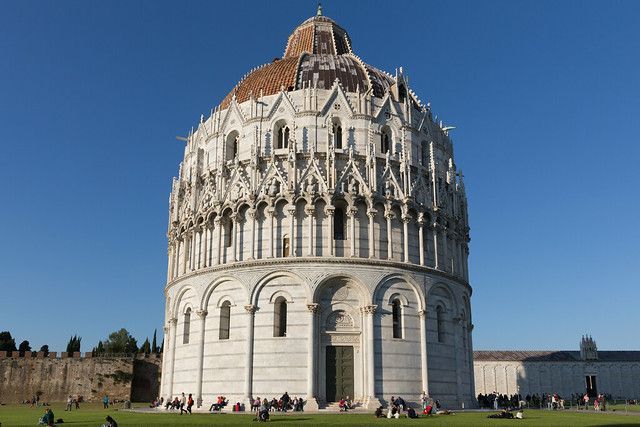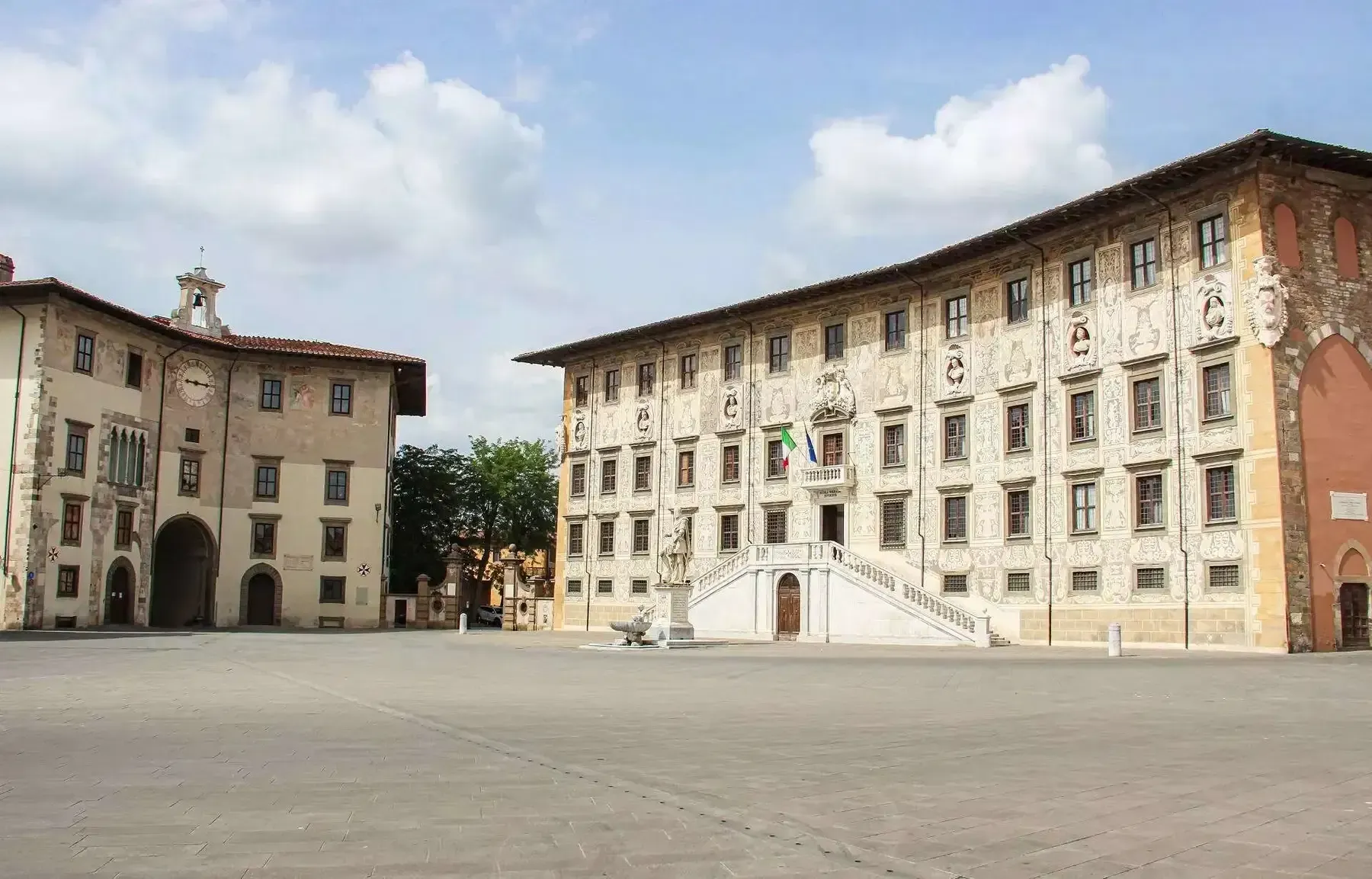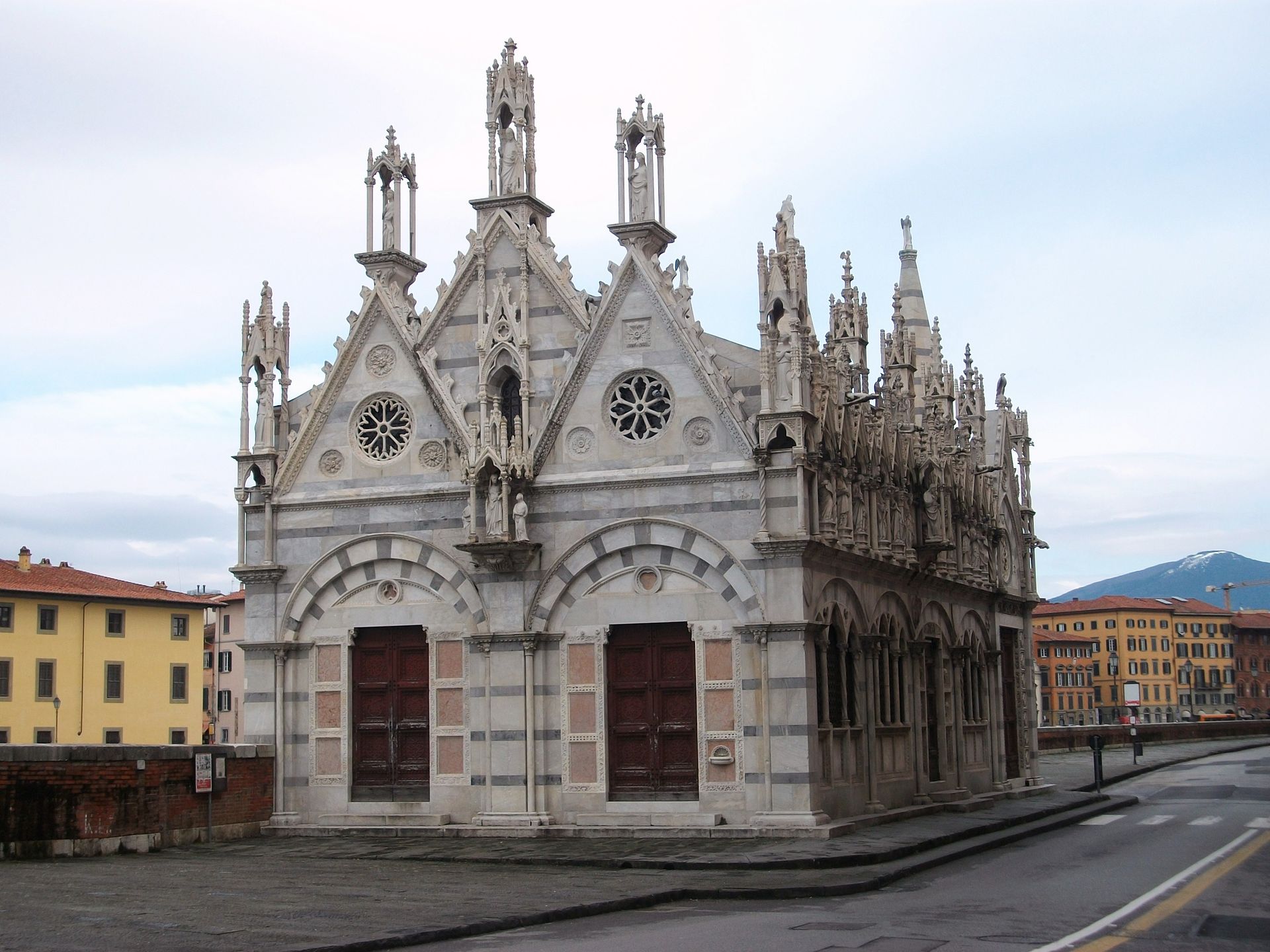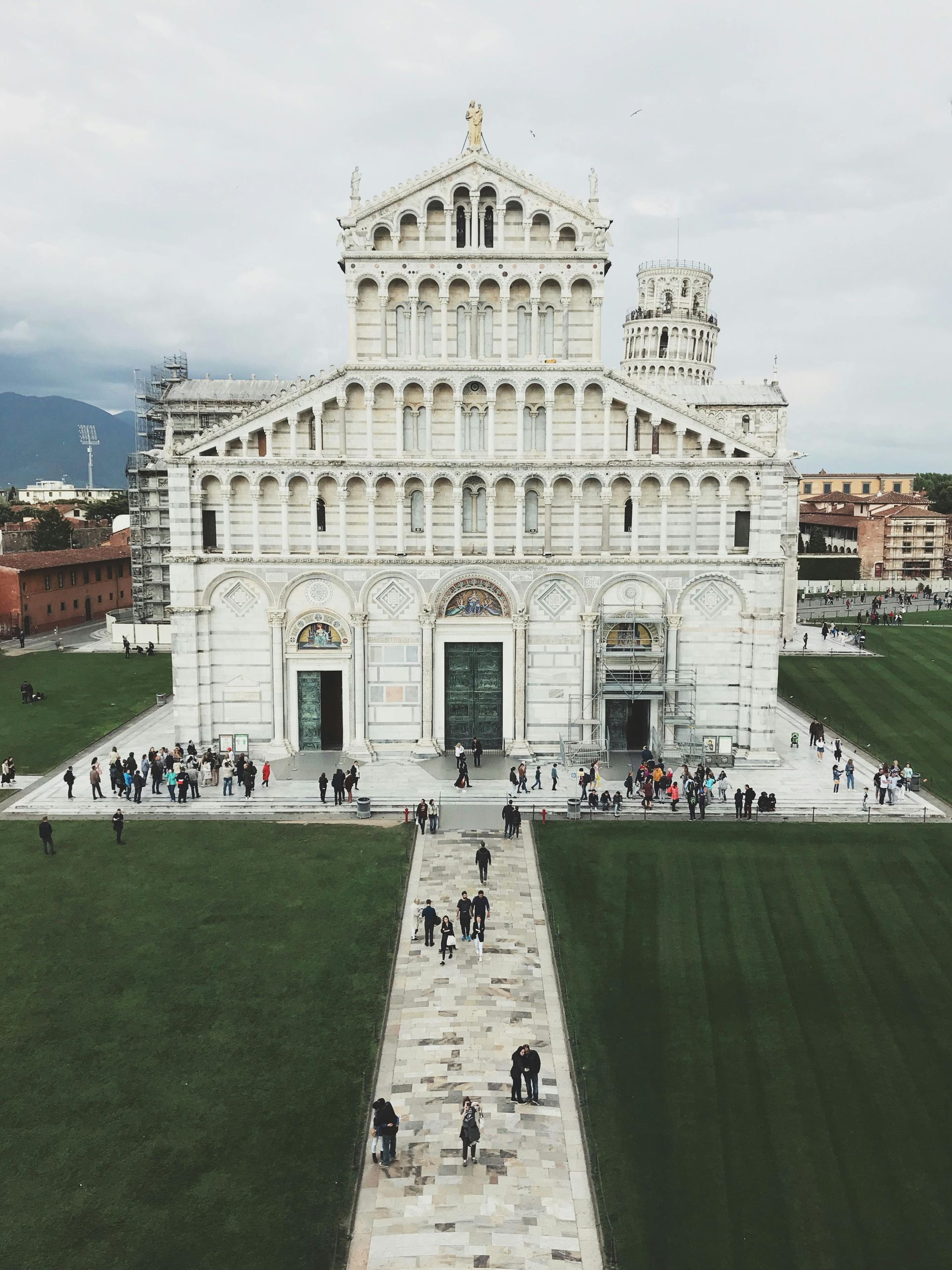PISA MUSEUMS
Your Passport to Pisa’s Artistic and Cultural Legacy
MUSEO DELL’OPERA DEL DUOMO
The
Opera del Duomo Museum, inaugurated in 1986, houses the cathedral’s treasure and the original artworks removed from the piazza’s sacred monuments for restoration and preservation. Here you’ll find the statues by Busketo, Rainaldo, Guglielmo, Nicola, and Giovanni Pisano, as well as the tombs crafted by Nino and Andrea Pisano, Tino di Camaino, and Andrea Guardi. The galleries trace the entire history of the Square of Miracles—its stylistic influences, original furnishings, and the grand processional choir screens. Highlights include Giovanni Pisano’s Madonna del Colloquio and Madonna Eburnea, the monumental 13th-century Christ Borgognone, and the iconic 12th-century Griffin, brought from the Balearic Islands as war booty and once perched above the cathedral apse—higher even than the statue of Santa Maria Assunta. Don’t miss the faithful alabaster scale model of the Leaning Tower, built from
25,000 Volterra alabaster pieces.
MUSEO DI SAN MATTEO
Housed in the medieval San Matteo convent overlooking the Arno, the
San Matteo Museum is essential for its Room of Crucifixes and the Painted Altarpieces Hall, exemplifying the Gothic-Pisan style. Its collection spans from the 12th to the 17th century, featuring masterpieces by the leading Pisan and Tuscan artists, plus archaeological and ceramic finds. Though perhaps underrecognized, San Matteo ranks among Europe’s premier museums of medieval art, thanks especially to its extraordinary 12th- and 13th-century Pisan painting school.
MUSEO DELLA GRAFICA
Since 2007, the stately palace on Piazza San Paolo a Ripa d’Arno has hosted the
Graphic Arts Museum, alongside medieval fresco fragments that reveal the building traditions of the Lanfranchi family (1539–1802). Rotating exhibitions showcase donated works by artists such as Giuseppe Capogrossi, Mario Chiattone, Fabrizio Clerici, Emilio Greco, Ennio Morlotti, Bruno Munari, Achille Perilli, Arnaldo & Giò Pomodoro, Pablo Picasso, Aligi Sassu, Vittorio Tavernari, Ernesto Treccani, Emilio Vedova, and Alberto Ziveri.
MUSEO DELLE SINOPIE
Located in the former Santa Chiara Hospital—whose 13th-century design is credited to Giovanni di Simone—the
Sinopie Museum preserves the underdrawings of the Camposanto’s frescoes. These “sinopie,” traced in red pigment on the first plaster layer, were revealed when World War II incendiary bombs ignited the roof on 27 July 1944 and the subsequent membrane removal uncovered these unique preparatory sketches.
PALAZZO REALE NATIONAL MUSEUM
Built in 1583 by Bernardo Buontalenti for Francesco I de’ Medici as the new princely residence—replacing the Medici palace at San Matteo—the
Royal Palace National Museum retains its patrician character with 17th–19th-century furnishings. Its collections include portraits, furniture, tapestries of Flemish and Florentine manufacture, and the ceremonial armor used in Pisa’s famed Gioco del Ponte.
MUSEO DELLE NAVI ROMANE – MEDICEAN ARSENALS
The
Museum of Ancient Ships, housed in the halls of Pisa’s Medicean Arsenals, unfolds over eight sections. In December 1998, excavations near Pisa San Rossore station uncovered layers of sunken Roman and late-antique vessels—victims of at least nine catastrophic floods between the 2nd century B.C. and the 7th century A.D. Today, over thirty impeccably preserved merchant and river boats illustrate Pisa’s ancient waterways.
PALAZZO BLU
One of the most striking palaces along the Lungarno,
Palazzo Blu traces its origins to 1356 when Doge Giovanni dell’Agnello built upon earlier 12th–13th-century tower-houses. Now an international hub for art and culture, it hosts major temporary exhibitions in a context rich with medieval remains.
BOTANICAL GARDEN
Founded in 1543, the
University of Pisa Botanical Garden is the world’s second-oldest academic garden (after Padua), originally located beside the San Vito convent near the Medicean Arsenal. Known then as the Garden of Simples, it pioneered the study of medicinal plants.
NATURAL HISTORY MUSEUM – CERTOSA OF CALCI
Originating as the Gallery of the Garden of Simples in the late 16th century under Ferdinando I de’ Medici, today’s
Natural History Museum at Calci Charterhouse boasts one of Europe’s largest cetacean skeleton collections, alongside zoological, archaeological, and mineralogical treasures amassed over centuries.
DOMUS MAZZINIANA
In the
Domus Mazziniana, the former Nathan-Rosselli House where Giuseppe Mazzini died in exile on 10 March 1872, visitors explore documents and exhibits on Italian unification and the Risorgimento.
THE CITY WALLS OF PISA
Pisa’s
City Walls represent the oldest nearly intact urban fortifications in Italy. Three circuits—Roman, early medieval, and the final Pisan Republic walls—were built in phases from 1154 to 1346. Still largely walkable, they encircle the historic center and offer several accessible pedestrian passages.










